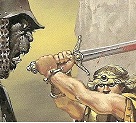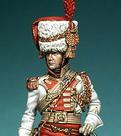Joel Billings
Posts: 32265
Joined: 9/20/2000
From: Santa Rosa, CA
Status: offline

|
quote:
ORIGINAL: cardolan
Looking great 
Will be posible to see something more in detail about air/logistic system? Seems there will be a huge step from WitE on these.
We will at some point, just too busy to put it together now. WitW testers are free to chime in if they want to. We're still working on the final map graphics, which deters me from posting screen shots, although it's getting close enough that as long as people realize it's not final art, it would be good enough.
Here's an excerpt from the documentation regarding the air system (it's a bit dry, the one page guide will be more fun to read). The big change is the addition of air planning and air execution phases that happen before the action phase (primarily ground movement/combat):
The purpose of this section is to provide an overview of air power and the game rules governing its use in Gary Grigsby’s War in the West. As detailed in section 8.0, air power in Gary Grigsby’s War in the West is represented by aircraft, pilots and aircrew organized into air group units that are assigned to and operate from fixed air base units (airfields) consisting of air support and anti-aircraft support elements. From a command and control perspective air base units are special air headquarters units (type 5) that are in turn assigned to Corps (type 4) and/or Air Force (type 3) level air headquarters units that then in turn report to higher level regional or national air headquarters units (type 2) and finally high command headquarters units (type 1).
Air group units in Gary Grigsby's War in the West can conduct a variety of missions executed by the computer, most of which are generated by player and/or computer generated Air Directives. Air Directives are the general orders given to an Air Force. Sections 5.3 and 5.4 provide detailed instructions on using the interface to plan, create and modify Air Directives. While the creation and editing of Air Directives takes place during the aptly named Air Planning phase, missions are flown during the Air Execution phase and in limited cases during the action (move) phase. The impact of these missions can be felt throughout the turn. Air group units can be assigned to Air Directives for ground support, ground attack and interdiction, strategic (city) bombing, strategic and tactical air reconnaissance, air superiority and naval patrols for sea control and interdiction during the air planning phase. Ground support missions are conducted during the action phase during individual combats. The other missions are conducted during the air execution phase, with the effects of air superiority, interdiction, recon, and sea control lasting through the entire turn. In addition to air superiority, the computer can scramble fighter air group units to intercept enemy air missions throughout the turn. Eligible anti-aircraft units will also fire on enemy air missions.
The transport or airdrop of supplies and combat units by air is normally conducted during the action phase by the player. The exception is the airdrop of combat units (airborne assault) in support of an amphibious invasion that is ordered by the player during the action phase, but conducted directly after the enemy logistics phase. The player can transfer eligible air group units between air base units during either the air planning or action phase.
The AI Move Air Units (hotkey shift-a) function can also be used to transfer and reorganize multiple air group units by the computer. For the Western Allies, the AI will generally try to move air forces forward along with the progress of the ground units (especially tactical air forces), while the for the Axis, the AI will generally try to move their air forces back as the Western Allies advance. This function is not recommended unless you intend to use this almost exclusively to handle placement of your air units.
The majority of air missions are implemented under air directives, the exceptions being interception, some naval patrols (the player can assign naval patrol air directives to other air groups), air transport and air transfers. During the air planning phase, air group units are assigned to type 3 and 4 air HQs, and those air HQs are given air directives that determine what mission those air group units will fly during the turn. The player can influence the process by directly issuing air directives to air HQs, or by setting general priorities and letting the AI generate the air directives through the automatic air directive creation screen (hotkey a). If the latter, the player has the option of tailoring those directives and the resulting air missions. In addition, various general mission parameters can be set for each air directive through the air doctrine screens (5.3.2). An air force (type 3 air HQ unit) or Flieger Corps (type 4 air HQ unit) attached to Luftflotte (type 3 air HQ unit) can each have a number of air directives assigned based on their leader’s air and admin ratings (5.3.3). Once these are completed, the player presses Execute and air missions are resolved in a series of impulses that represent 7 days and 7 nights of fighting with an info window displayed showing activity. Each set of day and night impulses has an associated air maintenance segment for repairs, training flights and morale recovery for idle or resting air group units. Once the air phase is completed, the player is placed in the normal action phase. An Air Execution Phase summary window is displayed after the air phase is completed.
_____________________________
All understanding comes after the fact.
-- Soren Kierkegaard
|
 Printable Version
Printable Version


















 ).
). 

 New Messages
New Messages No New Messages
No New Messages Hot Topic w/ New Messages
Hot Topic w/ New Messages Hot Topic w/o New Messages
Hot Topic w/o New Messages Locked w/ New Messages
Locked w/ New Messages Locked w/o New Messages
Locked w/o New Messages Post New Thread
Post New Thread